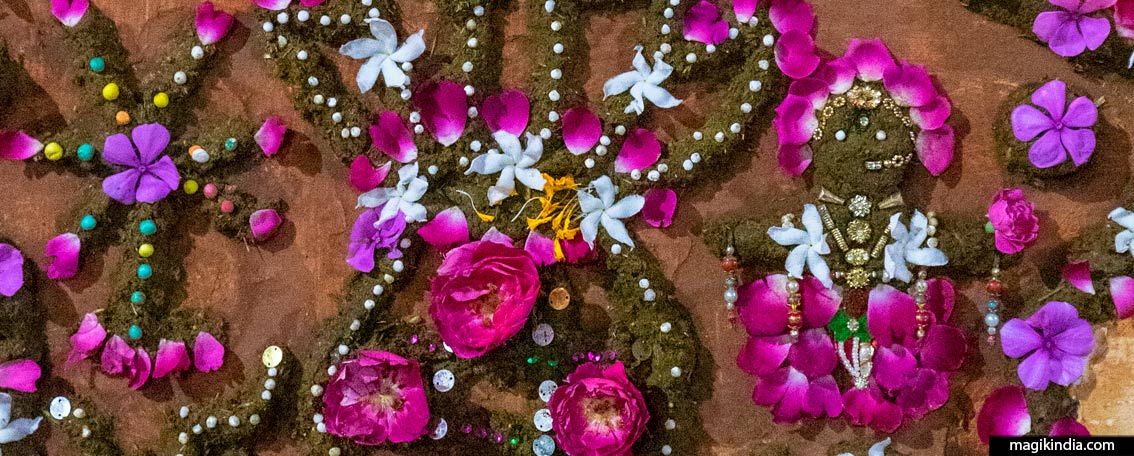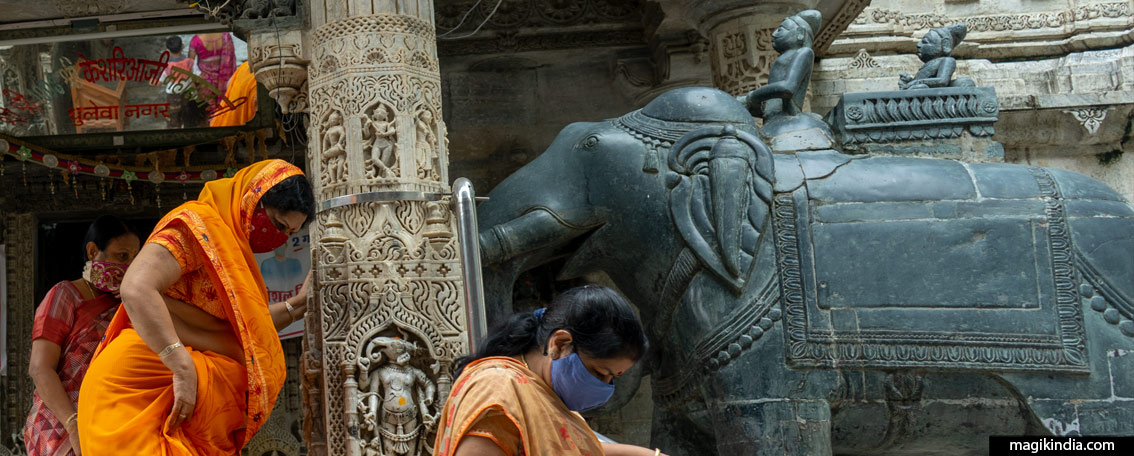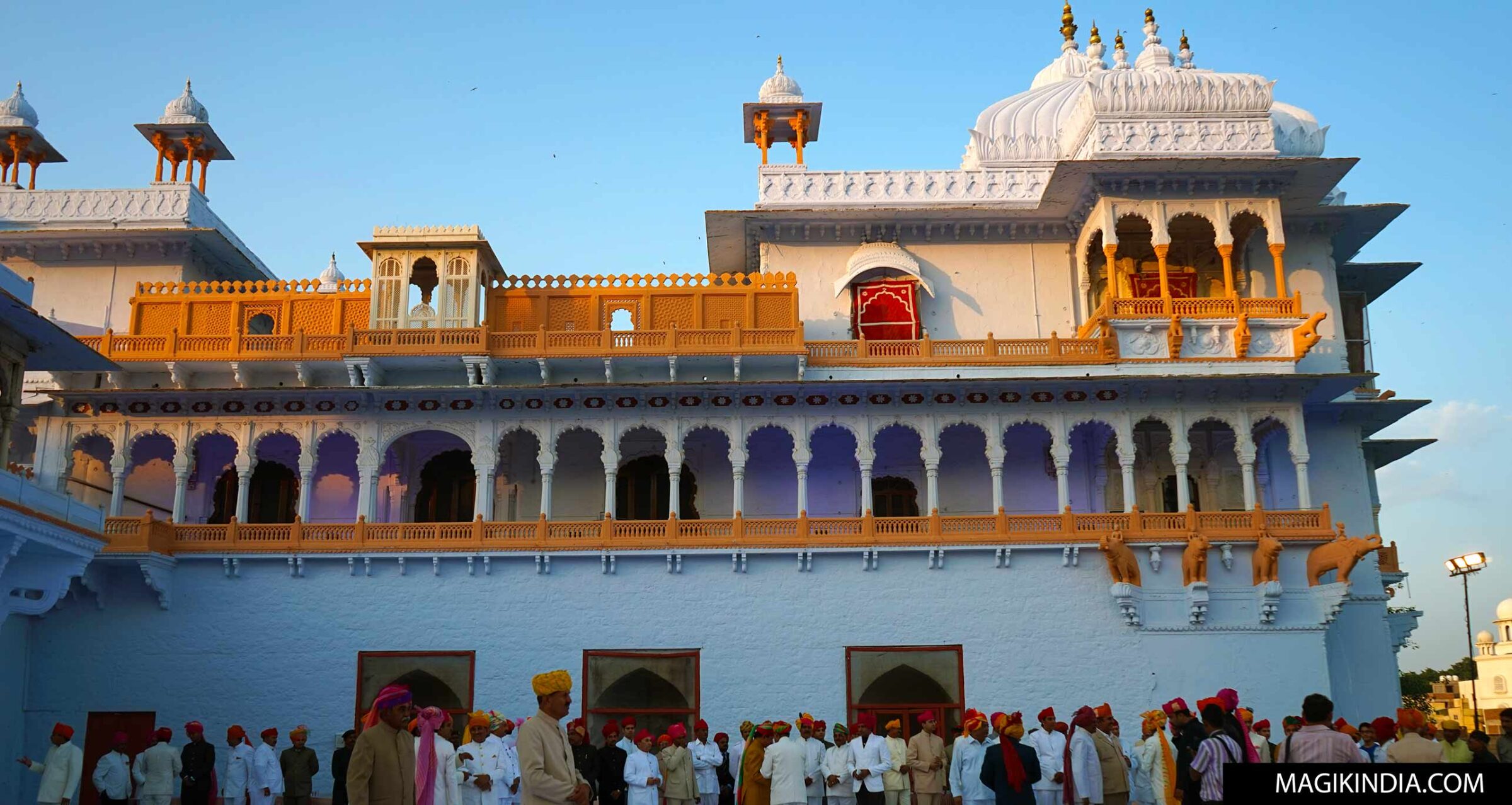
Kotah, Echoes of the Hadas Chauhan
Often overshadowed by its neighbors in Rajasthan, the city of Kotah, south of Bundi, nevertheless conceals unsuspected treasures. Its palace, perched on a rocky promontory, houses beautiful frescoes, but it is during the Dussehra festival that the city reveals its full magic. Kotah transforms into a kaleidoscope of colors, music, and religious fervor, offering a vibrant and unforgettable cultural experience to those who venture there.

I discovered Kotah during the Dussehra festival, one of the most famous in Rajasthan. On that day, dignitaries, dressed in their finest, would flock to the jaleb chowk, the outer courtyard of the Kotah Palace (Garh Palace), at the Maharaja’s invitation. Their turbans, weaving a farandole of colors, added a magical touch to the place.
Le Garh Palace
Situated on the right bank of the Chambal River, Kotah is the heart of southeastern Rajasthan, in a region nicknamed Hadauti – the “land of the hadas.” The region’s name comes from the Hadas, a prominent branch of the Chauhan clan of Agnikula Rajputs, who historically ruled this land.

Tradition has it that the foundations of the palace were first laid in 1264 CE. The story goes that Prince Jait Singh of Bundi State sacrificed the Bhil chieftain Koteya (the former ruler of the region) and buried his severed head at this site, symbolically marking his takeover of the territory.
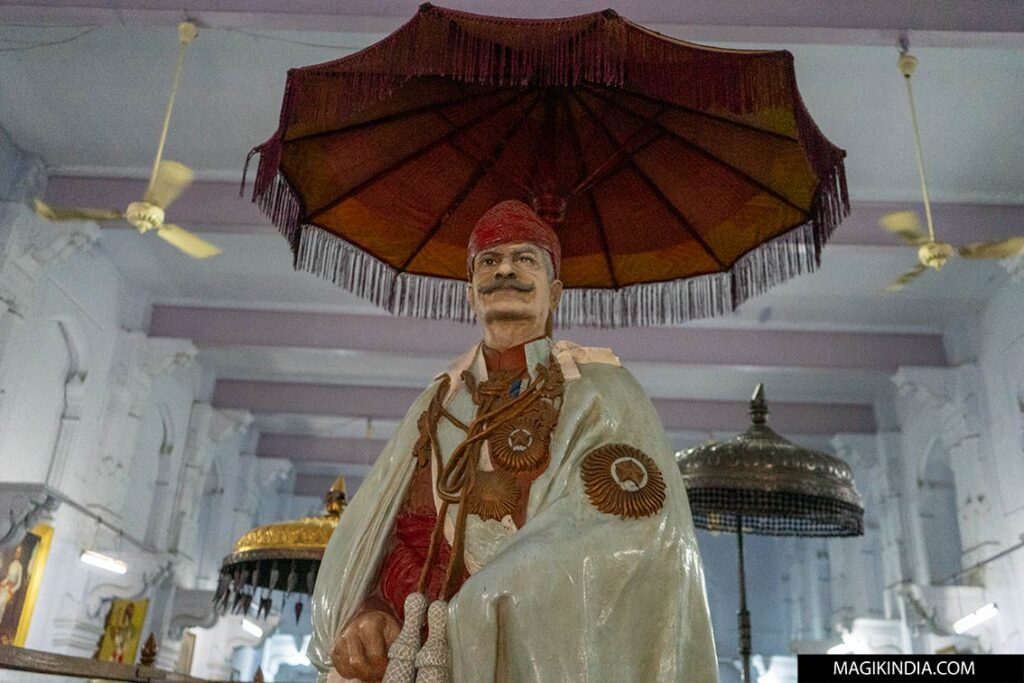
Kotah was originally part of the Bundi State. In 1624, the city officially became a separate state under the reign of Rao Madho Singh. It was from this period that the development of the palace took on a new dimension, with each ruler adding their own personal touch.
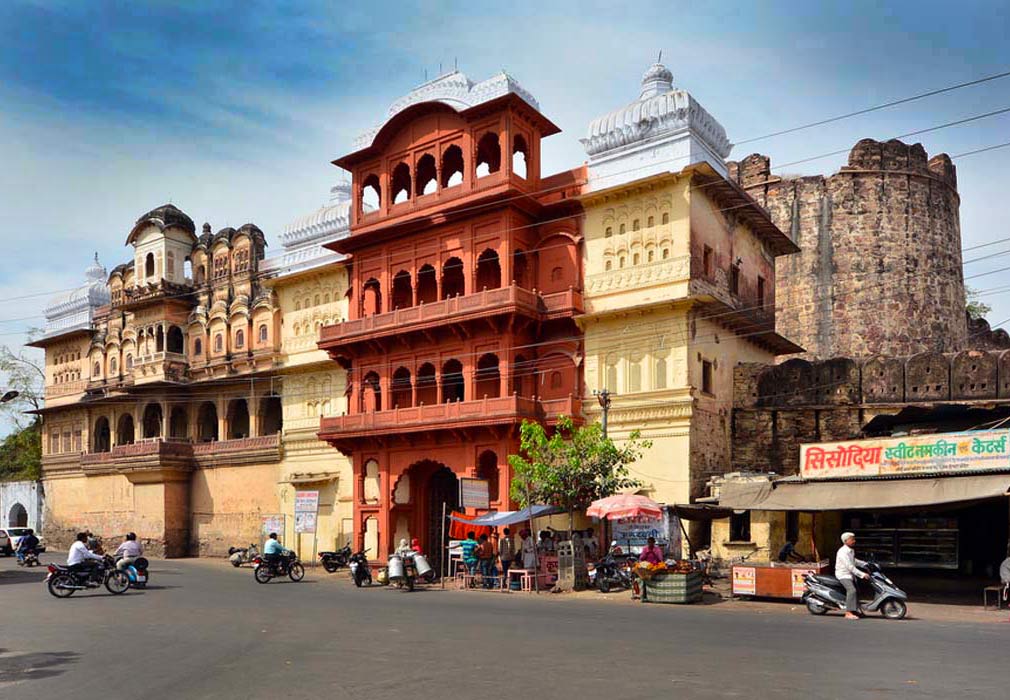
The current entrance to the palace complex is through the Naya Darwaza (New Gate), an imposing structure erected in the early 20th century by Maharao Umed Singh II. Overlooking a busy street in Kotah (the Tipta Chauraha), this structure is crowned by the Hawa Mahal (Wind Palace), which features ornately carved verandas, balconies, and jalis, which allowed the palace women to observe the hustle and bustle of the city unnoticed.
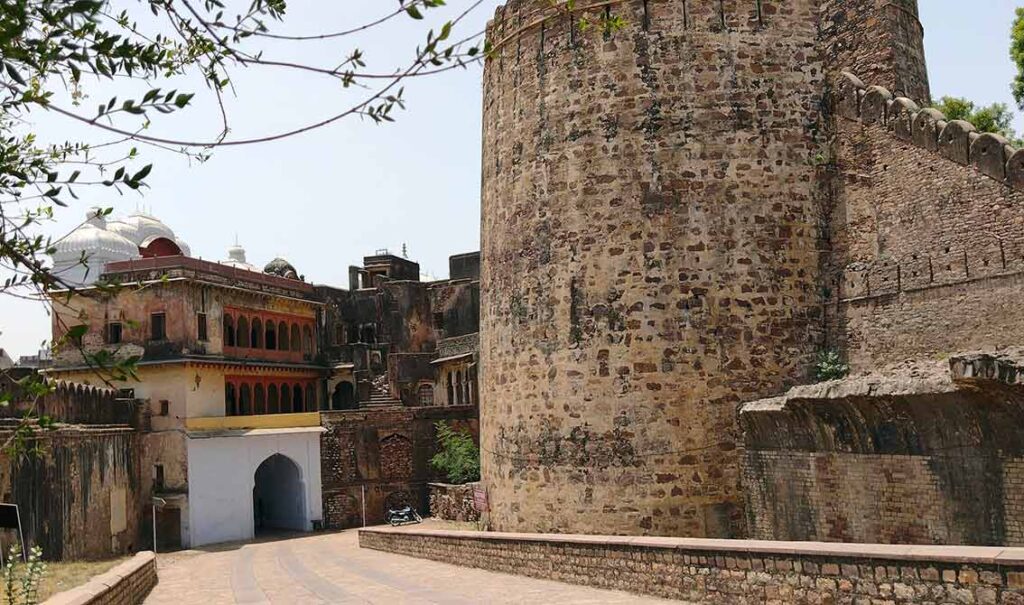
Once through this fortified gate, one discovers the scale of the whole: the palace is part of a vast fortified complex with ramparts and turrets, combined with thick concentric walls.
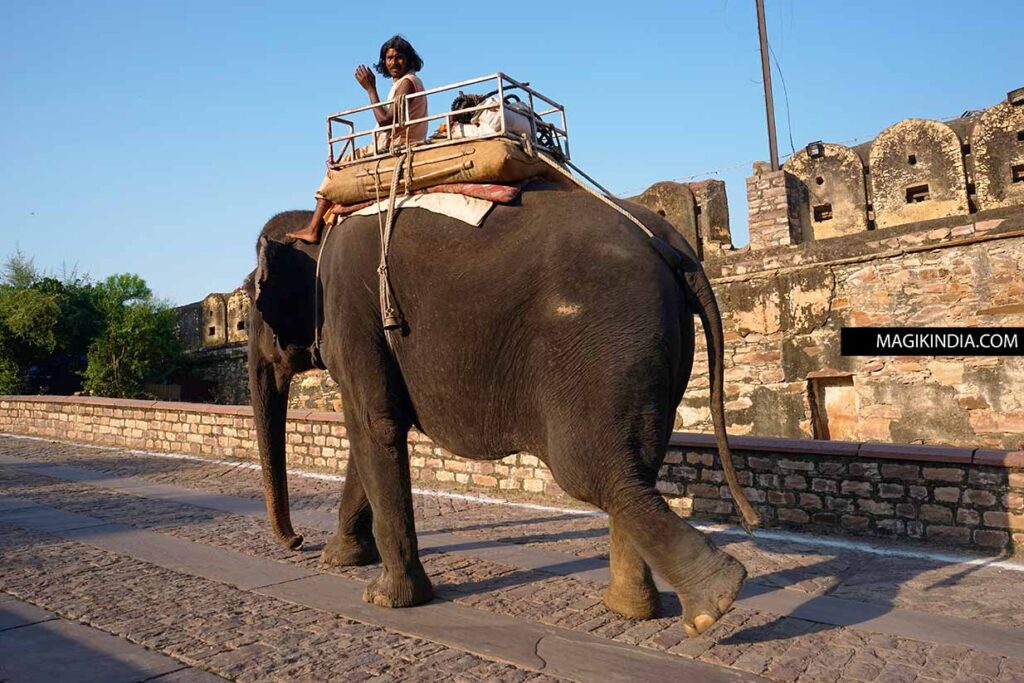
A paved ramp leads directly to the royal palace built on a rocky outcrop overlooking the Chambal River.
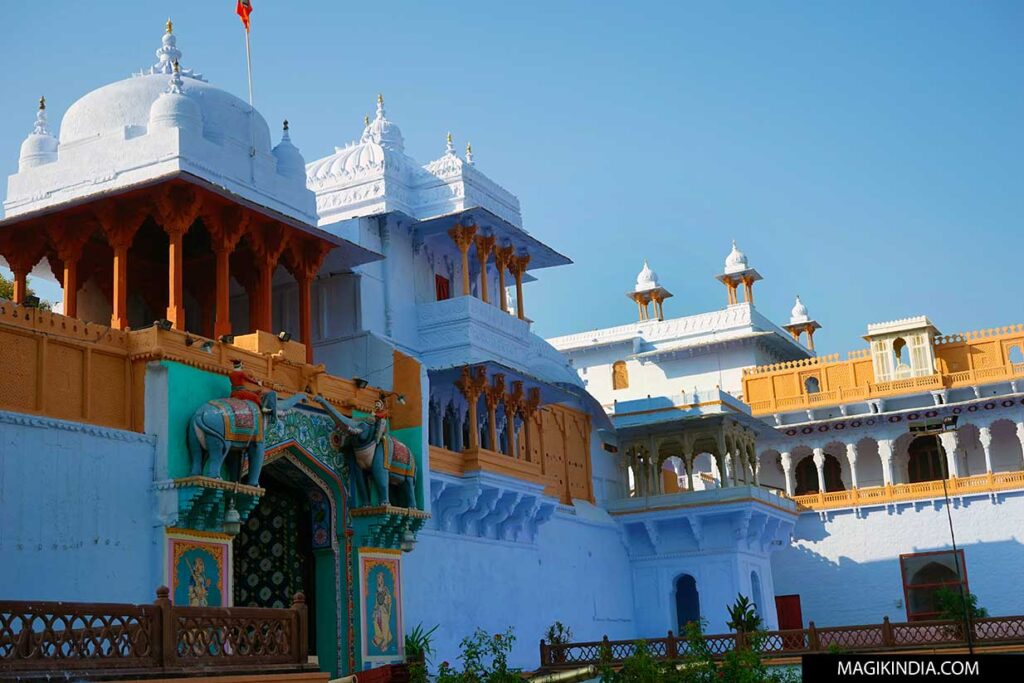
The Garh Palace offers a harmonious collection of palaces and courtyards. Punctuated with elegant balconies (jharokhas), jalis, and graceful domes, it perfectly embodies the essence of Rajput architecture.
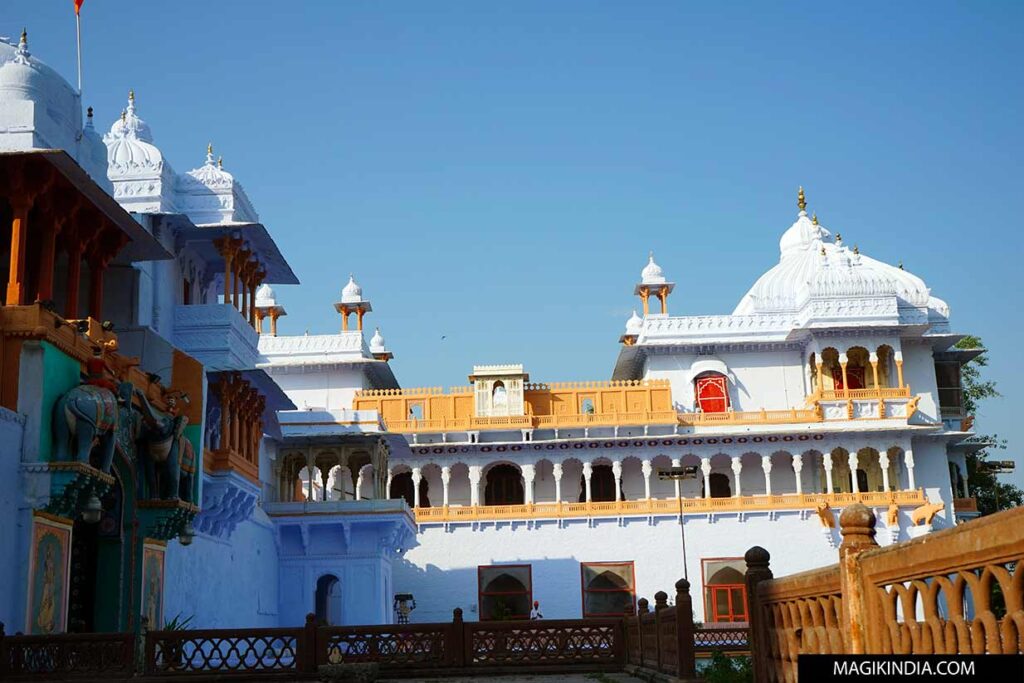
Unlike other royal palaces, Kotah Garh’s unique feature lies in its modest architecture. This simplicity is explained by the precepts of the Vallabha Sampradaya, the branch of Hinduism to which the ruling family of Kotah adheres. This tradition promotes intense devotion and a personal relationship with Lord Krishna, emphasizing selfless service (Seva).

In 1719, Maharao Bhim Singh I brought the golden idol of Sri Brijnathji (Krishna) to Kotah and installed it in the palace. Since then, it has been the Kul Devta (guardian deity) of the Kotah family and the chief deity of the local pantheon.
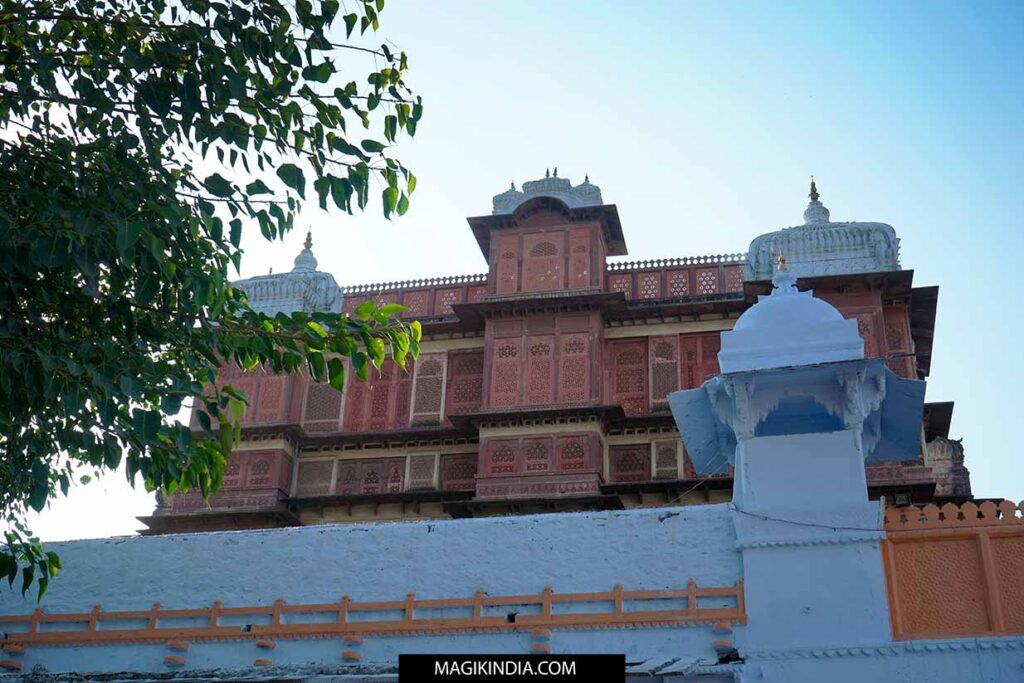
Access to the palace is through the “hathi pol,” or “elephant gate,” so named because of the two elephant sculptures flanking each side at the top of the entrance; they symbolize strength, royalty, and good fortune.
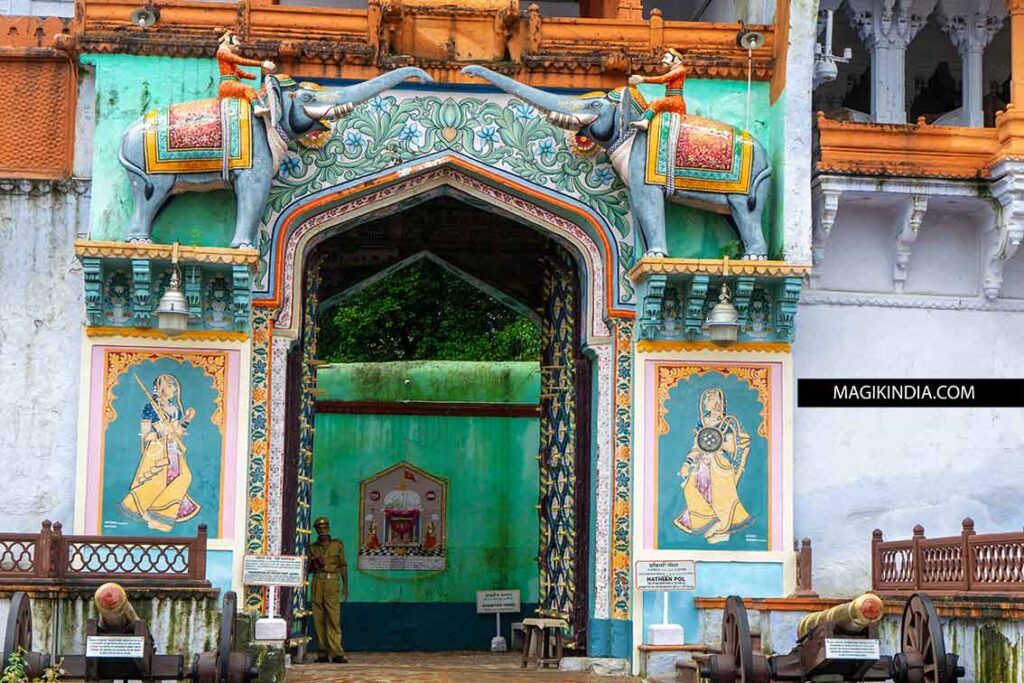
At the base of the gate, a scene catches the eye: the guardians are none other than female guardians. The painting depicts two Rajput women, weapons in hand. This depiction departs from the usual imagery of male warriors, offering a powerful and unexpected vision of feminine strength.
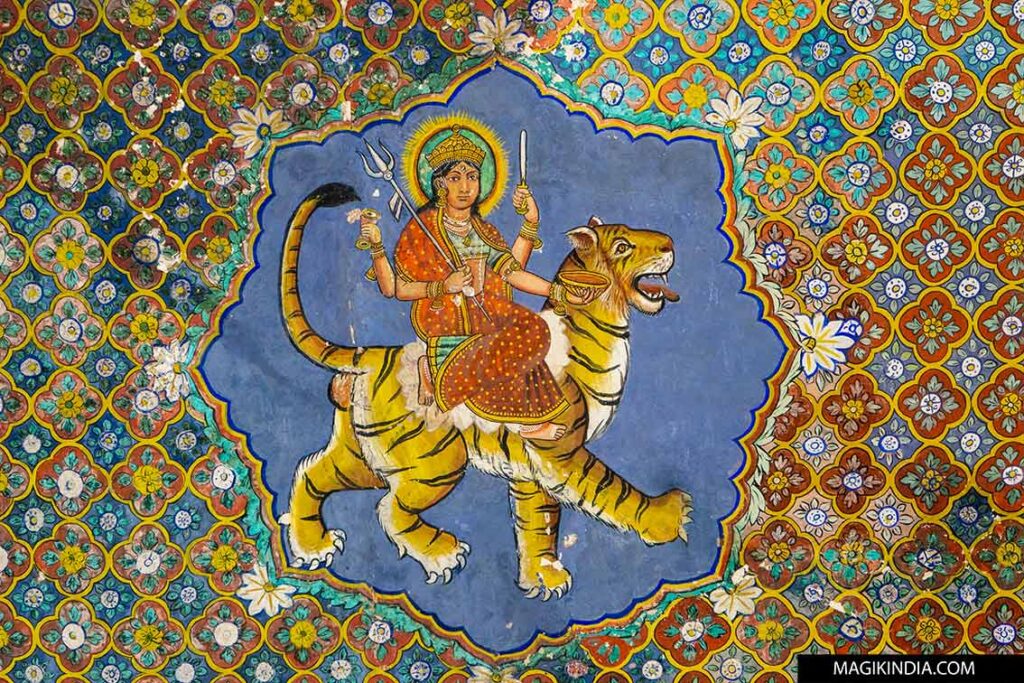
This symbolism of feminine power is beautifully reinforced by the image of the warrior goddess Durga displayed on the ceiling of the hathi pol. The dominant colors of gold, red, green, and blue create a vibrant fresco, enhanced by delicate floral motifs that frame the deity.

Opposite the entrance, the force of the Shakti, embodied by Durga and the warrior women, finds its divine balance. A temple dedicated to Shiva housing two stone lingams sits peacefully beneath a tree. This juxtaposition creates a spiritual harmony, where the feminine energy of creation and protection is complemented by the masculine energy of transformation and destruction, providing a powerful balance at the heart of the palace.
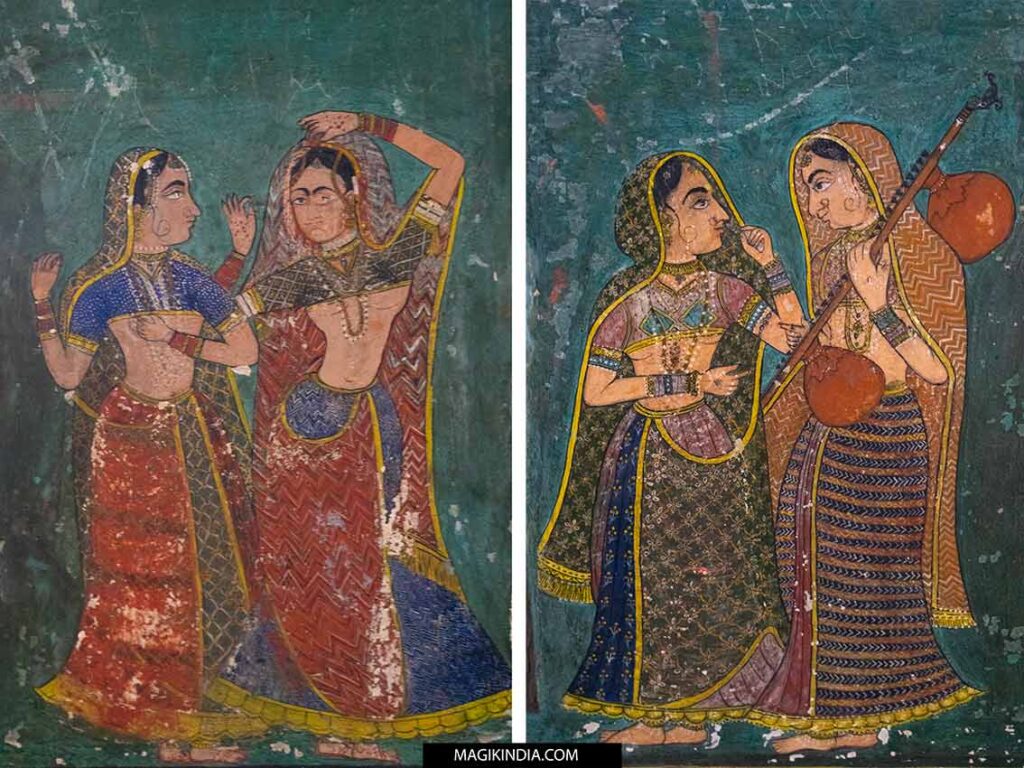
Beyond the Hathi Pol, a vast courtyard opens onto several small palaces. Although the palace’s exterior architecture is sober, its interior frescoes are breathtakingly refined.
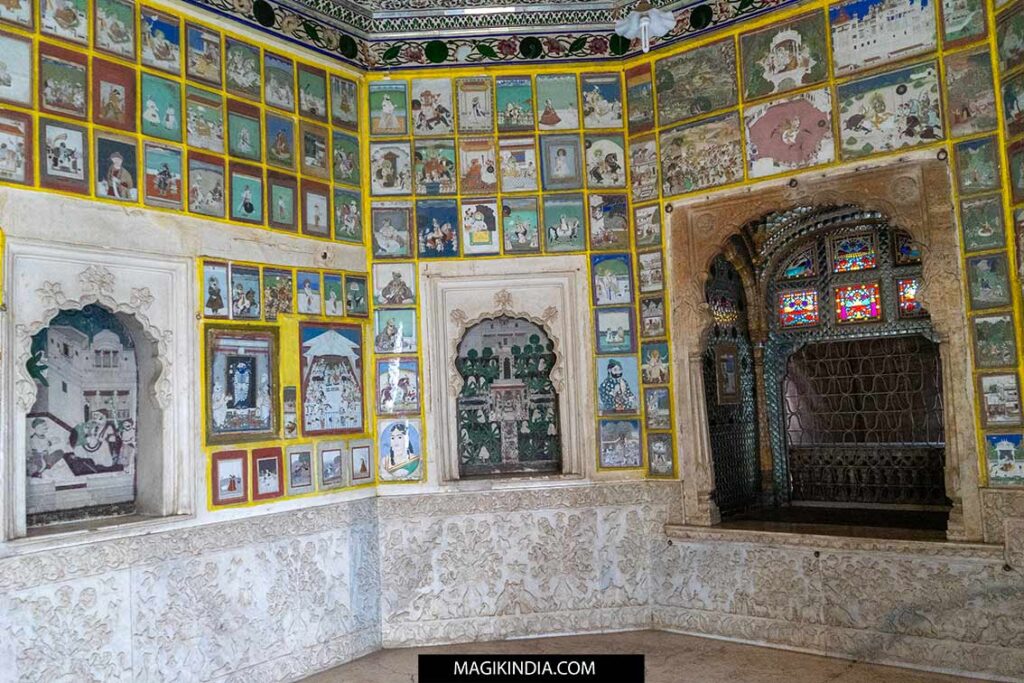
Initially, Kotah (Kota Kalam) paintings were very close to the Bundi style. However, Kotah painting began to develop a distinctive style during the reign of Rao Jagat Singh (17th century). Due to Kota’s close ties with the Mughal Empire, elements of the Mughal style (such as realism, depth, and perspective) can be seen in Kotah miniatures. It is also distinguished by its vibrant colors and the use of frames around the compositions, similar to those in miniatures on paper.
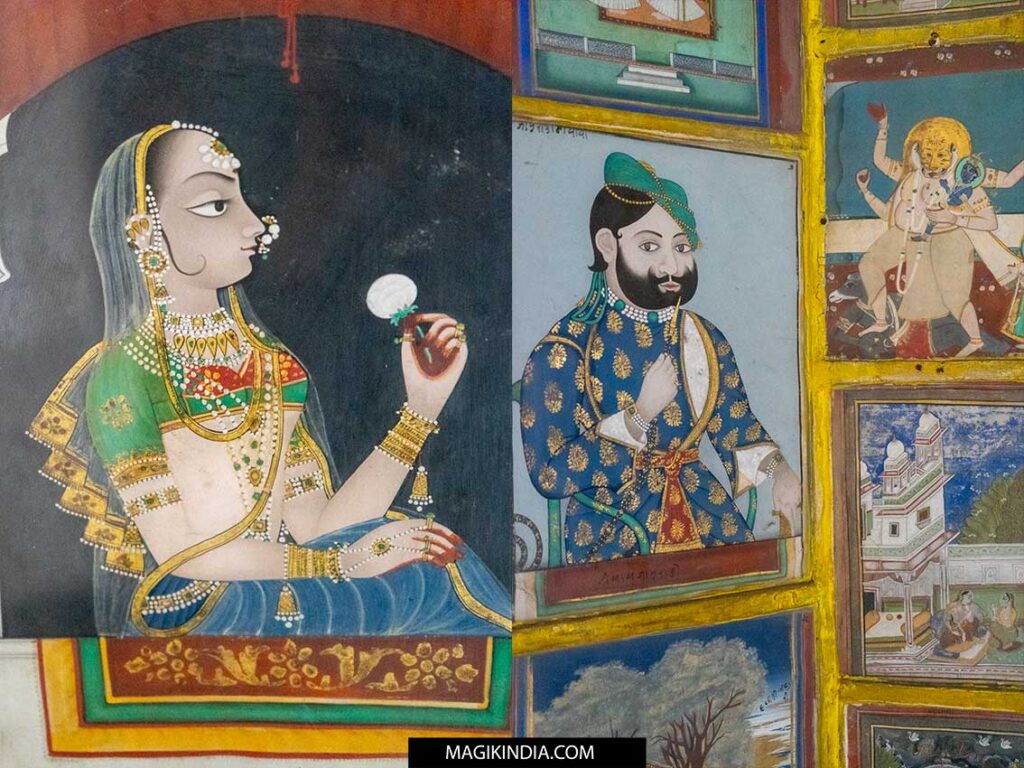
The Bada Mahal, which is the first to be visited, boasts true works of art telling a multitude of stories: scenes from royal life, hunting expeditions, grandiose processions, meticulous floral and faunal motifs, and episodes from Hindu mythology, particularly those related to Lord Krishna. As for the lower walls, they are carved in white marble with Mughal floral motifs.

The royal chambers are a testament to immense opulence with gold inlays, carved ceilings, and windows and doors encrusted with precious stones.
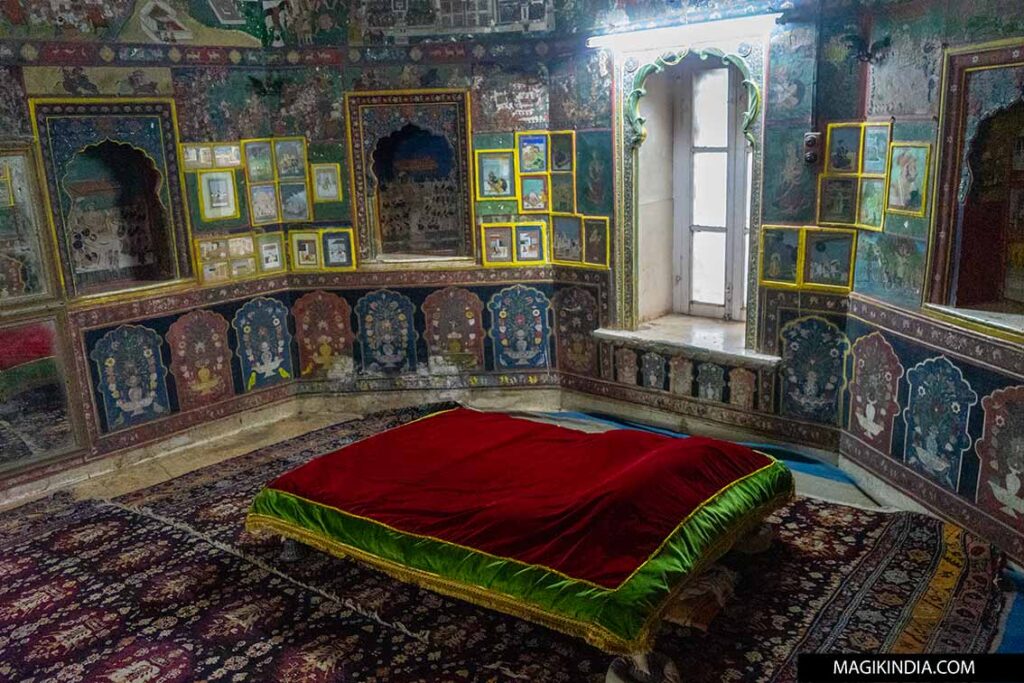

As for the Zenana Mahal (‘ladies’ quarters), it features exquisite mirror work on the walls and ceilings, creating a dazzling effect when light reflects off it.
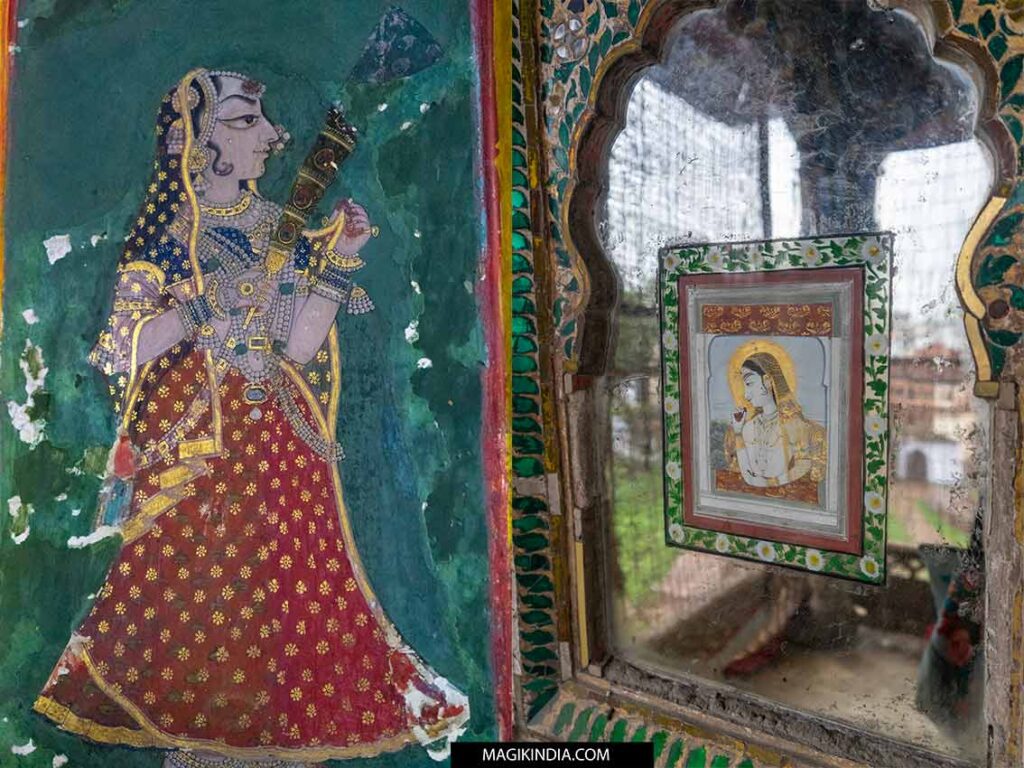
The palace also houses the Rao Madho Singh Museum, which displays miniature paintings of the Kotah school, collections of weapons, textiles, artworks and royal regalia.

Of all the works on display, the most eye-catching is the life-size statue of a royal elephant.
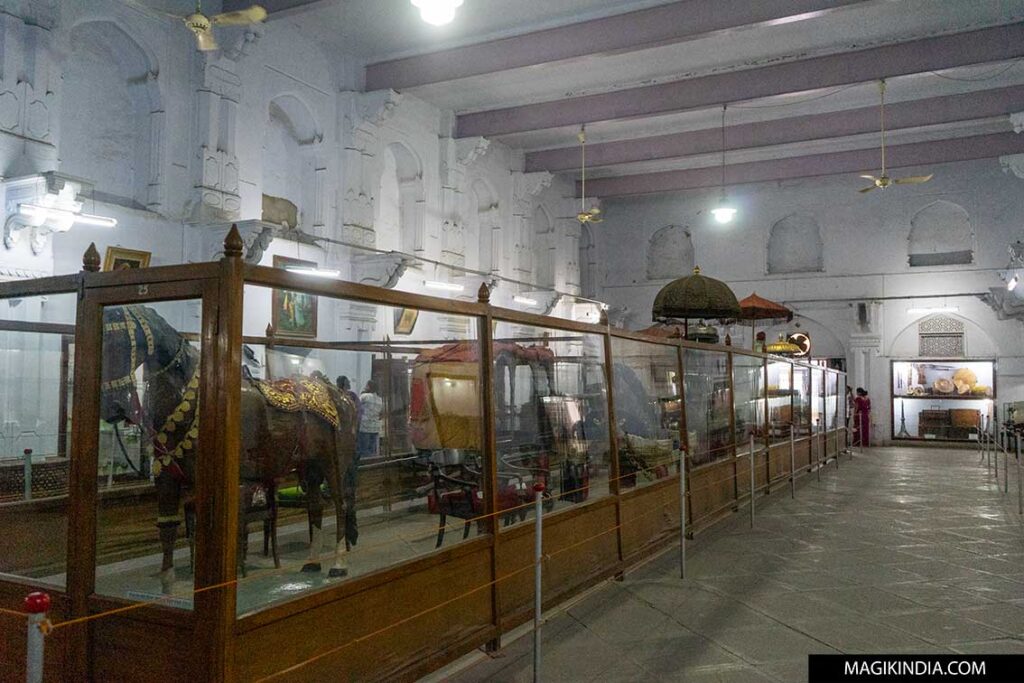
Dussehra festival in Kotah
Dussehra is undoubtedly the best time to visit Kotah, which is brimming with infectious energy and excitement on this day.

This festival celebrates the symbolic victory of good over evil: that of Lord Rama over the demon Ravana, and of Goddess Durga over the demon Mahishasura. Learn more about Dussehra.
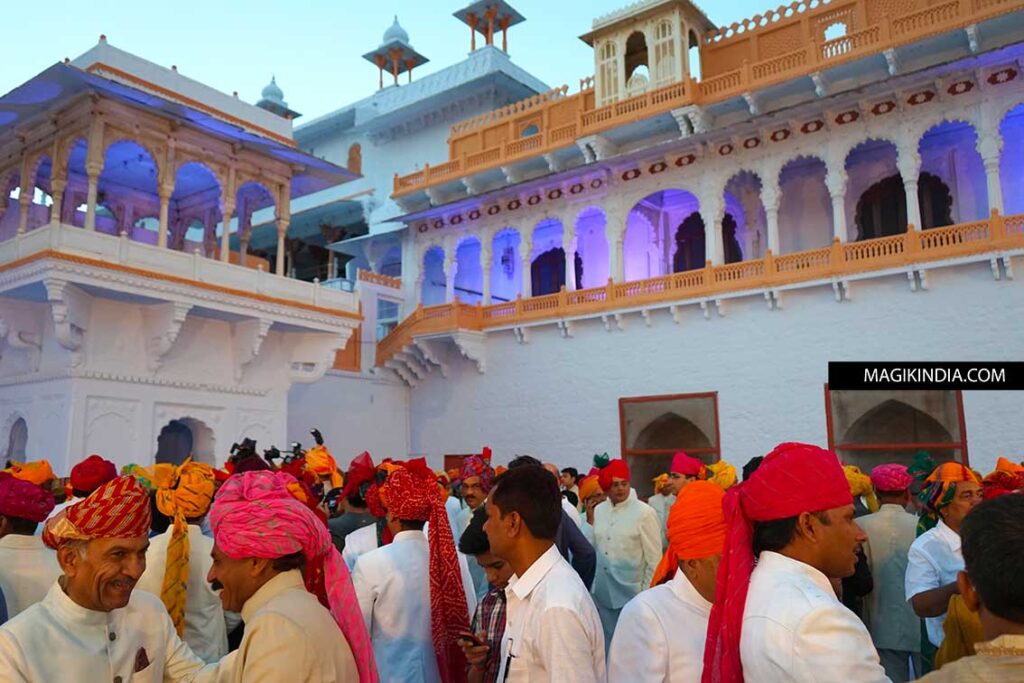
Dussehra begins at Kota Palace. The opening ceremony is a special occasion, taking place in the outer courtyard of the palace in the presence of the Maharaja. Selected guests are honored to witness this spectacle, kicking off the celebrations.


After this solemn opening, the festival takes on a whole new dimension with a grand parade that retraces emblematic episodes from the Ramayana, the Indian epic. Decorated floats, dancers, and musicians parade through the streets, creating an electric and joyful atmosphere. The parade continues until it reaches a large esplanade, where gigantic effigies of Ravana, Kumbhakarna, and Meghnad are erected.
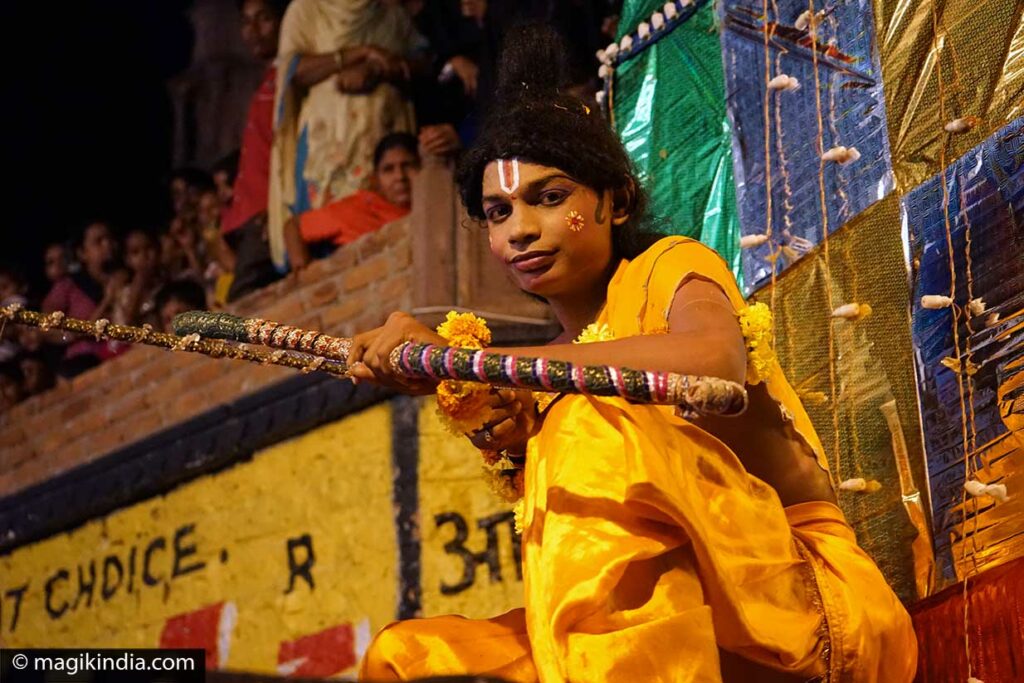
The highlight of the festival is the burning of these giants, in an explosion of fireworks and to the enthusiastic cheers of the crowd. It’s a moment of pure joy!



